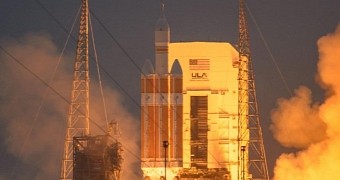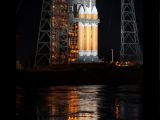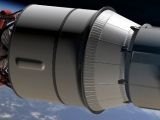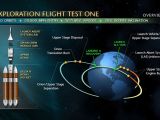If you've been keeping an eye on the news these past few days, you probably know that, just yesterday, December 5, NASA's Orion spacecraft completed its first space adventure. It a nutshell, it took to the skies atop a rocket, circled our planet twice, and then returned to Earth.
As explained by NASA scientists, Orion's first trip to space and back was definitely one for the books, and more importantly, a perfectly smooth ride. Thus, it appears that the spacecraft behaved flawlessly all throughout its maiden voyage.
How the launch and the space trip went
For those unaware, Orion was initially scheduled to launch on December 4. However, weather conditions coupled with some technical difficulties involving a valve with an attitude problem forced NASA to postpone the launch until the following day.
Come December 5, the spacecraft left our planet nestled atop a Launch Alliance Delta IV Heavy rocket, said to be the largest rocket the US currently has in its inventory, at 7:05 a.m. on the dot. The rocket was launched from the Space Launch Complex 37 at Florida's Cape Canaveral Air Force Station.
During an initial phase of this mission, Orion circled our planet at an altitude of approximately 100 miles (160 kilometers). Having completed this first orbit, it went into overdrive and ended up reaching a height of 3,604.2 miles (5,800.3 kilometers).
What this means is that the spacecraft reached an altitude some 15 times greater than the one the International Space Station likes to hang around at and even passed through the Van Allen radiation belts, which are two-donut like zones packed with high-energy particles that encircle our planet.
After completing its second Earth orbit, Orion simply allowed itself to fall back to the ground. While free falling, the spacecraft reached a speed of 20,000 miles per hour (roughly 32,300 kilometers per hour) and endured temperatures about twice as hot as lava coming out of a volcano.
With the help of the parachutes scientists were kind enough to fit it with before sending it deep into space, Orion made a successful landing in the Pacific Ocean, not for from the Mexican state of Baja California. It was located and recovered by US Navy Vessels the USS Anchorage and the USNS Salvor.
Latest news says the spacecraft is now resting aboard the USS Anchorage. Should things go as planned, Orion will reach the Naval Base San Diego sometime this coming Monday. Once it returns to the US, the spacecraft will be entrusted to scientists, who will get busy processing data collected during flight.
The launch went just as expected, NASA says
Needless to say, the scientists behind Orion's maiden voyage could not be happier about the outcome of the spacecraft's first adventure. They say that the success of this mission goes to show that humanity has what it takes to explore space and that it's now clear it is only a matter of time until people will reach Mars.
“We as a species are meant to press humanity further into the solar system and this is a first step,” said Bill Gerstenmaier, NASA’s associate administrator for the Human Exploration and Operations Directorate. Today was a great day for America. While this mission was unmanned, we were all aboard Orion,” added Flight Director Mike Sarafin.
Interestingly enough, yesterday's trip makes Orion the first human-rated spacecraft to leave low-Earth orbit since NASA's last moon landing, the Apollo 17 mission in December 1972.
It is expected that, in the days to come, further details concerning Orion's maiden voyage will be shared with the public, so keep an eye on this page for updates. Meanwhile, sit back, relax, and enjoy this video showing Orion leave Earth and head for the skies.

 14 DAY TRIAL //
14 DAY TRIAL // 




